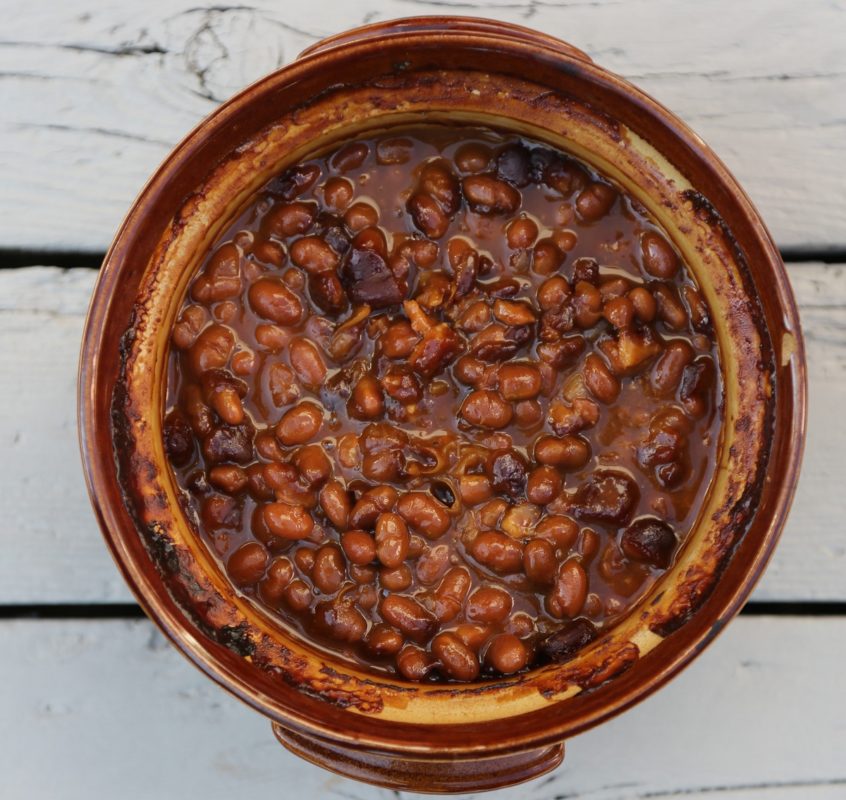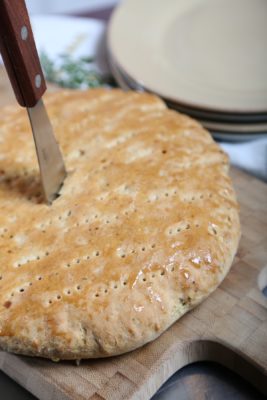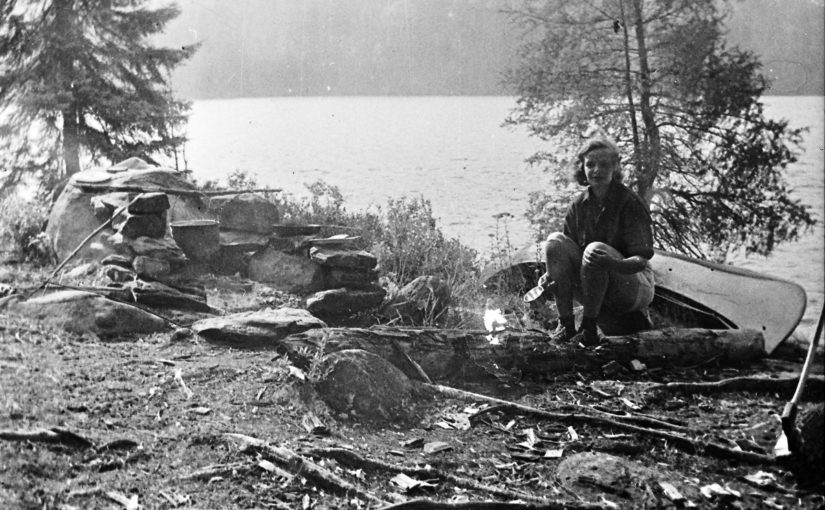In today’s post, Chef Deb Rankine, a.k.a. The Fridge Whisperer, shares time-tested beans and bannocks recipes.
With Ontario Parks celebrating its 125th anniversary, it’s fun to look back at how backcountry camping in our multi-landscaped wilderness has changed over the decades.
In Algonquin Provincial Park, for example, original backcountry involved a birchbark canoe and a dunnage bag filled with enough provisions to last adventure seekers a week or two while paddling and portaging through the park’s many lakes and rivers.
A 1940s provision list from The Algonquin Hotel suggests the following — in addition to other pantry staples, candles, matches and soap — should be sufficient to supply two people for a week in the wild:
- seven pounds of bacon
- six pounds of sugar
- three pounds of dried white beans
- three pounds of coarse ground coffee
- two pounds of canned fruits
- four tins of evaporated milk
The cost was $9.00. The duo would make camp for the night, cook supper over the campfire, and head in for a good night sleep on a bed of balsam boughs.
Fast forward to today
Backcountry camping looks very different indeed.

The birchbark canoe has been replaced by a two-person inflatable kayak with telescopic aluminium oars. Tree boughs have morphed into ultra-lightweight, all-weather tents.
Kitchen fare has evolved, from heavy cast-iron Dutch ovens over an open fire to anodized aluminum cooking kits, weighing less than four pounds, that include a portable gas stove, pots, pans, and folding cooking utensils.
While backcountry camping has changed over the years, one thing’s for sure: our love of hardy home cooking has not. So wherever you call home for the night, here are two camp-worthy recipes that have not only withstood the test of time, but are doable over a campfire or on a camp stove.
Campfire baked beans (serves 8)
Fast-track this recipe by switching out the ingredients with cans of baked beans spiked with a little molasses and you’ll be sitting down to dinner in half an hour.

- 3 cans (540mL) white navy beans, drained and rinsed
- 1 medium yellow onion, diced
- 1/4 pound salted pork belly, diced
- 1/2 cup packed brown sugar
- 1/2 cup ketchup
- 1/4 cup pure maple syrup
- 1/4 cup cooking molasses
- 2 teaspoons mustard powder
- 1 teaspoon kosher salt
- 1 teaspoon cracked black pepper
- boiling water
Place beans in a cast-iron Dutch oven along with onion, pork, brown sugar, ketchup, maple syrup, molasses, mustard powder, salt and pepper. Stir until well combined.
Add enough boiling water to barely cover beans.
Set Dutch oven over slow-burning embers and bake until beans have absorbed most of the liquid, about two hours, stirring occasionally.
Bannock (makes 1)
-

Photo: Jason Chow Photography 3 cups all-purpose flour
- 2 tablespoons baking powder
- 1 teaspoon kosher salt
- 1/4 cup melted butter
- 1 1/4 cups water
Stir together flour, baking powder and salt. Using a fork, work in butter until mixture is crumbly.
Add water and stir until a soft, slightly sticky dough forms. Turn out onto a floured work surface and knead until smooth and no longer sticky (about five minutes).
Pat dough out into a 1/2-inch-thick round, and transfer to a well-greased large cast-iron skillet. Prick surface of round with the tines of fork.
Cook on indirect heat over slow-burning embers or, alternatively, over a low flame until golden and crisp, and bannock is cooked in the middle, about 15 minutes per side.
